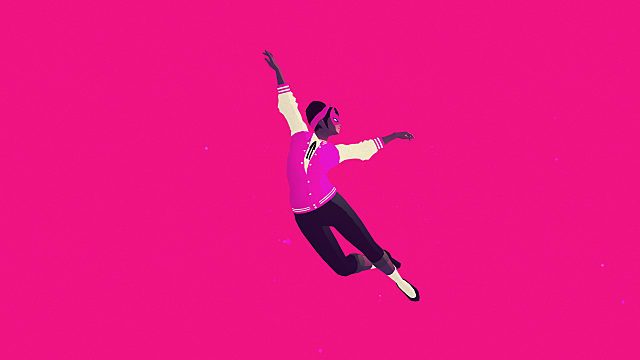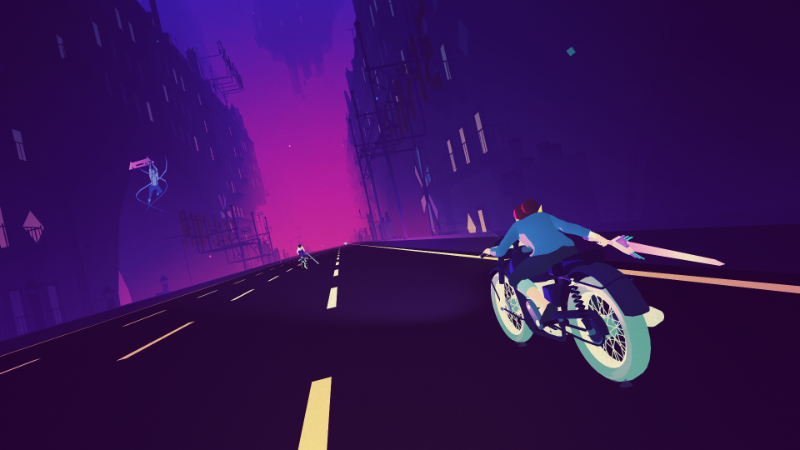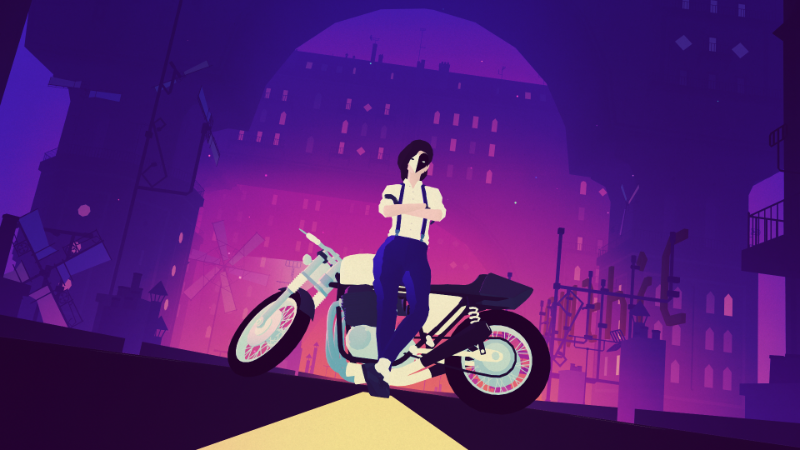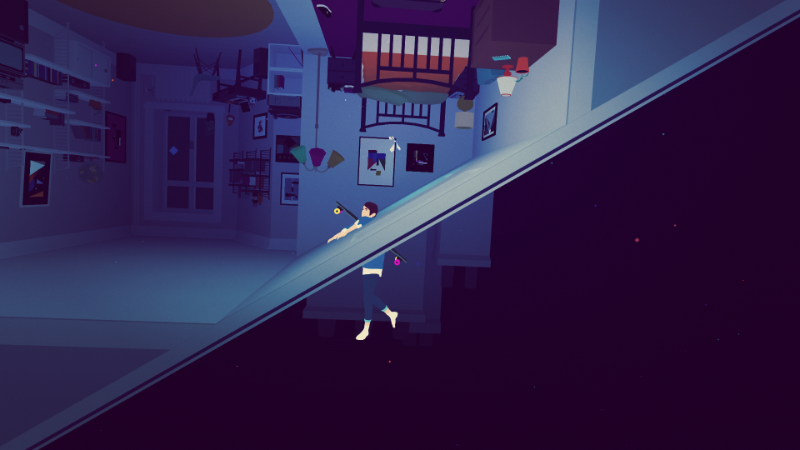How long must a game be for it to justify your time and money? Five hours? 20? 100? How about just 60 minutes? Is that too brief?
Such a short runtime is often reserved for indies cheaply referred to as “walking sims,” and though I love those games, I understand when others don’t. How you spend your time and money is up to you, I can merely recommend you do it one way or another.
For similar reasons, I’d understand your reservations about Sayonara Wild Hearts if all you knew about it was its brief runtime.
But this review is dedicated to proving that brevity does not define a game, and it can even be an asset when used as smartly as Simogo’s stylish arcade game does. At almost exactly one hour in length, SWH won’t keep you for long, but it will stay with you forever.
Sayonara Wild Hearts Review: Walking on a Dream
Sayonara Wild Hearts is a lot of different things; it’s hard to nail it to one genre. Much of the time, SWH is mostly akin to an auto-runner, but never completely. Your character, The Fool, moves dazzlingly down ceaseless streams made of streets and stars and neon-lit fantasy to the tune of an original hypnotic dream-pop soundtrack.
All the while, it’s her (see: your) job to move through the world without colliding into its transformative obstacles. Sometimes she’s on a dreamy motorcycle dodging rival fireballs, other times she’s hitched a ride on a majestic, ghostly deer leaping across steep valleys. Other levels abandon this format entirely, too. When The Fool navigates through the world well enough, she’ll set high scores and achieve medals in bronze, silver, or gold.
The game’s 25 levels are unpredictable, and even writing this out, I understand how it may be hard to understand. The game doesn’t have any familiar analogs, making a frame of reference difficult.
Suffice it to say the arcadey scorekeeping is there for one type of fan, but the game never cares too much about how you’re doing. If you want to chase high scores for each level, you’re welcome to go for them and the game provides a strong challenge for score-chasers.
The better aspect of the game, however, is how SWH so forgivingly dismisses your struggles. Failing a section repeatedly? You can skip the level. Miss qualifying for a bronze medal? It doesn’t matter. You still get to advance to the next level.
This accessible, worry-free design is emblematic of the game’s overarching, though somewhat muddled, message: feeling comfortable in your own skin.
Through each colorful, swiftly-moving level, players live out The Fool’s romantic entanglements, reimagined as trendy biker gangs, polygonal wolves, cunning twins that can bend reality, and other larger-than-life actors. They make up a past mired by heartbreak and failed attempts to be something she’s (you’re) not for someday else’s sake.
Or at least, that’s my interpretation.
The game leaves it open for you to decide, and a lot of its messaging is hidden in its lyrics, so it’s easy to overlook or actively disengage from. Sayonara doesn’t even necessarily lose anything for it, because it’s just so good in every facet.
If you want to play SWH as a score-attack game, it’s challenging and precise. If you need it to be a fiendishly stylish accessibility buffet, it works perfectly for that, too.
To those who have already played Sayonara, it may seem like I’ve buried the lede, but really I’ve wanted to save the best for last: the music. The game’s original soundtrack is unforgettable, cheery, and truly uplifting. This goes even further because each level puts the music to gameplay. It becomes a rhythm-action game, but never demanding more than you can give it and always happy to lift you up when you’re down.
From pulse-pounding tracks like “Inside” and “Dead of Night” to instant-love-anthem “Begin Again” or the rare respite of “The World We Knew,” every level is a single track. Collectively, it forms a playable pop album. It’s some of the smartest, most cohesive design choices I’ve ever seen, and I was stunned to learn it was made by just two people.
No frame is wasted, no moment is glossed over. More than a music video come to life, it’s more like being in the audience for a live show. The power of live music is unlike anything else, and through its interactivity, Sayonara Wild Hearts manages to get your blood flowing with the same euphoria.
Sayonara Wild Hearts Review — The Bottom Line
Pros
- Unforgettable music
- Unpredictable, engaging level design
- Accessibility options galore
- A fun challenge for high score-seekers
- Relentlessly stunning visuals
Cons
- By nature of the genre, its gameplay will leave some players wanting
It’s telling that for a game that takes just an hour to play, I have over seven hours of time in the world of Sayonara Wild Hearts between iOS and Switch. This weekend, I’ll play it again on Xbox, too. It’s infinitely replayable, whether you want to go for a gold medal, hear your favorite song, or solve some of the game’s hidden riddles.
Most of all, I find myself returning to it when I just want to feel good about myself, about the world, or about The Fool. I’ve never played anything like Sayonara Wild Hearts.
Understanding that its gameplay doesn’t reveal some industry-altering new mechanics, I still find Sayonara Wild Hearts to be one of the best games of the generation and the kind of game I will keep close to my heart forever.
Sayonara Wild Hearts is more than a game for me. It’s a catharsis vessel. It’s a story of self-love. It’s a reminder that some things break but that doesn’t make us broken. It was once a dream and now forever a memory. It’s transcendent and undying, but, of course, it is. Wild Hearts Never Die.










Published: Feb 26, 2020 5:04 AM UTC